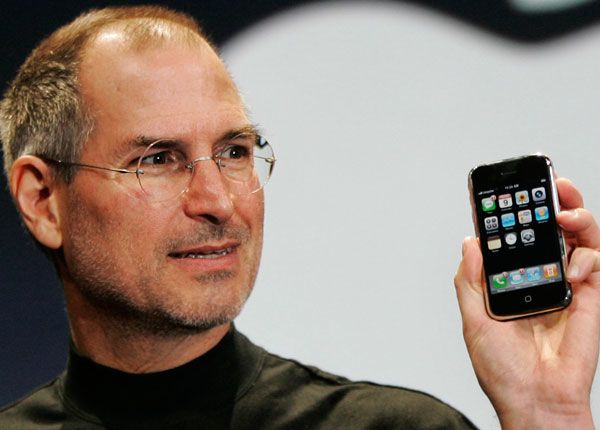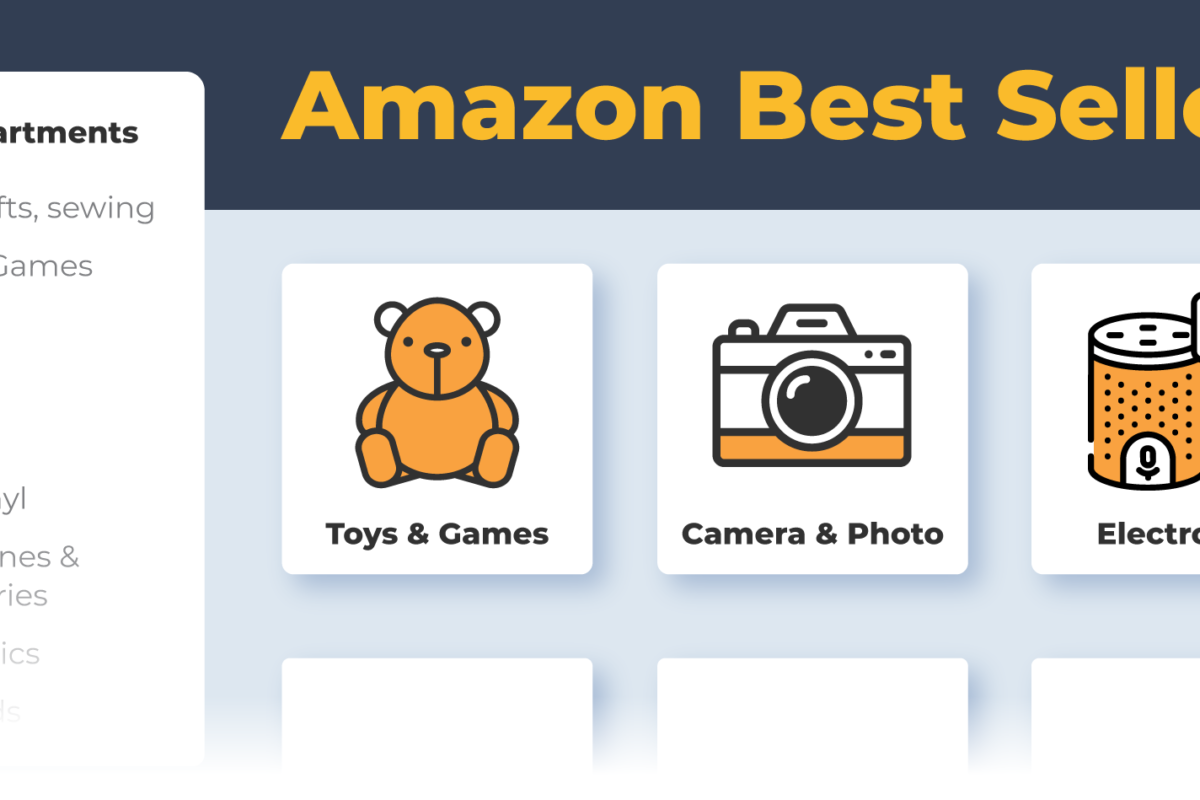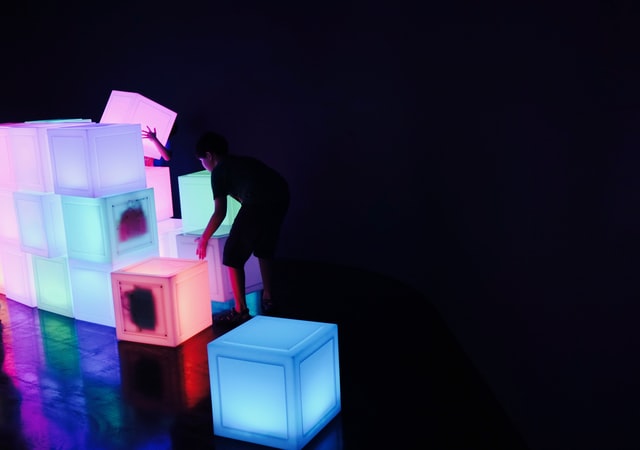
My dad always said, if you want to get ahead of the leader, don’t follow his tracks in the snow. If I owned my own jewelry store, this would be the mantra for everything I did. And my store would be truly different.
I think the greatest challenge we all face is avoiding the well-worn track. So, how do we avoid falling into step with everyone else? The trick is to find inspiration, not from your competitors, but from brands outside your own category of business.
Let’s imagine that Apple went into the jewelry business. Now let’s imagine how the Apple jewelry store might look. We all know Apple – a fundamental indicator in itself of the brand’s leadership. The Apple personality is well etched into our collective understanding of the brand. We could, therefore, imagine that the Apple jewelry store would proclaim itself in the street environment as a jewel itself. The façade would be sleek; the staff would be casually elegant, dressed in black shirts adorned with incisive, white-printed apothegms across their backs. The jewelry displays would be elegant – simple of line and perhaps using white as a theme. And the jewelry pieces would feature as the stars of a coordinated and well-design show. Each piece – and perhaps there’d be a select few on display, ensuring that the story behind each work had the space and time to express itself – would be a paragon of design. You’d be able to see them up close, examine their well-crafted detail and even touch them to fully appreciate their seamless craftsmanship. They’d be Apple pieces, sharing design characteristics that underline the Apple brand’s inherent mission, personality and values. They’d be individual expressions of each artist’s creativity yet united in their evocation of the Apple brand signature. In brilliant paradox, their individuality would reinforce a recognizable and unifying brand, leaving no doubt about the brand behind the products.
Let’s step back onto the street, out of that imaginary Apple jewelry store, and consider jewelry brand distinction in general. There’s a row of jewelry stores in this shopping district. Lined up side-by-side, they offer easy comparison. Or do they? They’re all the same. Where’s the distinction between them? If I were to take a photo of each jewelry store, I’d use the images to build a matrix to map brand difference – and lack of it.
The matrix is built around the four sides of a square. The vertical left-hand side accommodates all my pictures of stores that are almost uniform with each other. The opposite side of the square is where I put my photos of stores that are unique in some way. Along the top of the matrix are photos of stores that offer an experience – they’re more than retail outlets or places to display jewels. Finally, along the bottom of the square, are all the other stores. These are the bland environments – neither expressing difference, experience, or an environment of any distinction.
Guess where most of the stores would be on the matrix? Would I be wrong in assuming they’d mainly be in the bottom left, where the uniform and bland stores overlap. Many of the remainder would be in the middle of the matrix, mapping their identities as stores which are essentially trend followers that provide a pleasant environment but one which is advised merely by function and habit, not brand expression. There’s a pretty big gap at the top right where we would map unique, experiential stores – if we had a picture of one.
Guess what – that’s where I would aim to have a picture of my jewelry store.
My customers would be willing live billboards for my jewelry products. Just as the white earphones have become a distinctive icon for the Apple brand, the proud wearers of my store’s products would be sporting distinctive pieces that could have come from one place only.
So, how do you identify the right source of inspiration to start building your distinctive brand experience?
First, you need to carefully consider the values you want your jewelry store to convey. Should it be cool, courageous, harmonious, sensitive, humorous, inspiring? Did you notice the values I listed? We’re not talking about reliability or quality. These are values which consumers take for granted in a brand that has the temerity to offer itself for sale. Brand values are personality attributes that set a brand apart from others. Think of brands as people. Values describe the personality of your brand, just as people represent values through their unique personalities. Think Oprah, and you’d possibly identify values such as compassion and care. Think Steve Jobs and you might associate visionary qualities with the man. The same is the case with powerful brands. Your brand’s personality is ultimately what distinguishes it. And the personality is built on well-defined and consistently expressed values.
Your brands values should not only underline a distinctive personality. They allow you to tell your customers a great story. Like people, brands exist within a personal history. They exist in a community context. Tell the story of your brand through its expression and the relationship it builds with customers. Now you’re ready to identify the source of your inspiration. Consider brands, beyond your sector, which embody values to place them in the top right-hand corner of the matrix. Brands that are unique and which offer an experience in our encounters with them.
Perhaps you might think of Red Bull. There’s a brand which might qualify as inspiration for a jewelry store because of its unique distribution strategy. I’m sure you’re aware that custom-built Red Bull fridges reside in surf wear stores as much as in convenience stores, because the surf wear stores are where their core customer group shop.
On the same theme, Quicksilver, the surf wear clothing brand, has developed stores that are experiential, evoking a sense of the beach, of fun and youth. Gather a group of brands which reflect aspects of your store’s personality and values and examine how they can inspire concepts and directions for your store.
Your next step is to consider your story. Branding isn’t all about design. It’s about creating a powerful story. The story, the values, the personality all contribute to advising the design. The design expresses these characteristics to achieve a holistic and integrated, confident and distinctive brand expression. The fact is, you’re selling a story first, jewelry as an inevitable consequence. The jewelry pieces are symbols for the brand experience. My jewelry store would be an epicenter of storytelling.
Every jewelry piece in my store would have a unique story to tell. Each piece would express a unique origin, a unique jeweler behind its creation, unique gems or craftsmanship. No piece would leave my store without being accompanied by a booklet exploring the story behind the piece. My staff should be carefully trained in conveying each and every story. And my website would extend the experience. On- and offline, my jewelry store would function as theater. The set would be accompanied by a unique signature sound – music for the store and website. A signature scent would pervade the store and would be infused into all my exquisite packaging materials. Customers would take home the story, the piece and the sensory experience.
In my book, Buyology, I explore why more than 70% of us touch wood for luck. It’s true! More than 40% of us avoid walking under ladders and opening umbrellas inside, for fear of invoking bad luck. Countless rituals like these are engraved into our social consciousnesses. Individually and collectively we practice ritual daily. Weddings, engagements, birthdays – they’re all rituals. And our addiction to them translates into a powerful branding tool. So, on top of the story, the environment and the sensory experience of my store, I’d invent rituals for everything: the way staff greet and attend to customers, the way the piece’s stories are told, the way in which purchases are wrapped and presented to customers. Every consumer touchpoint offers an opportunity for brand expression.
Buying jewelry should give customers a memorable experience. It should be an experience that’s so distinctive that they can’t help but talk about it. Breathless stories of the beautiful jewelry store experience would spread by word-of-mouth to friends and family. This is the marketing strategy to aim for. Classic advertising rarely works, and it comes at an outrageous cost. I’d make my store do the talking and let my customers be the pilgrims who spread the word to the world.
The Blake Project Can Help: The Brand Positioning Workshop
Branding Strategy Insider is a service of The Blake Project: A strategic brand consultancy specializing in Brand Research, Brand Strategy, Brand Growth and Brand Education




